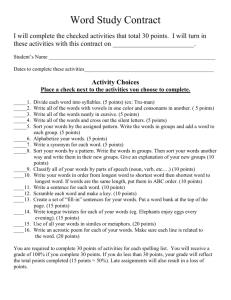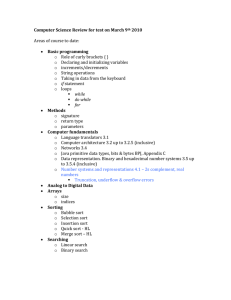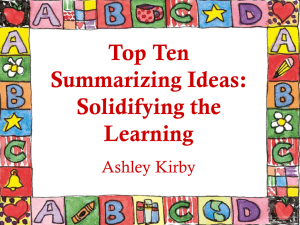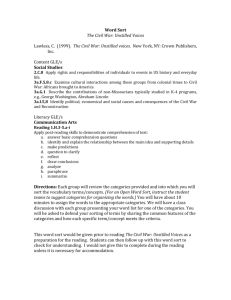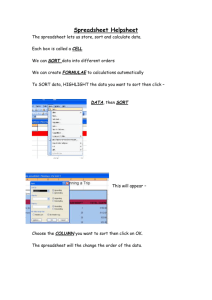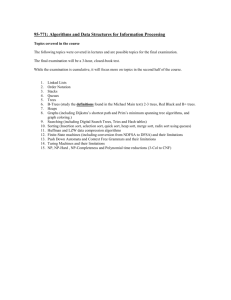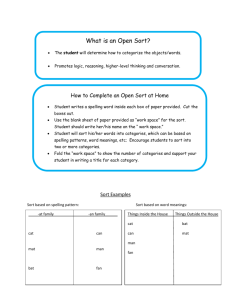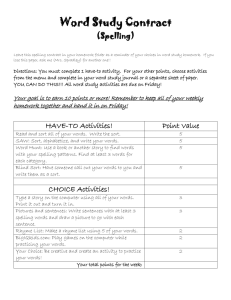Ecology Kit, CLASSIFYING ANIMALS – 6th
advertisement
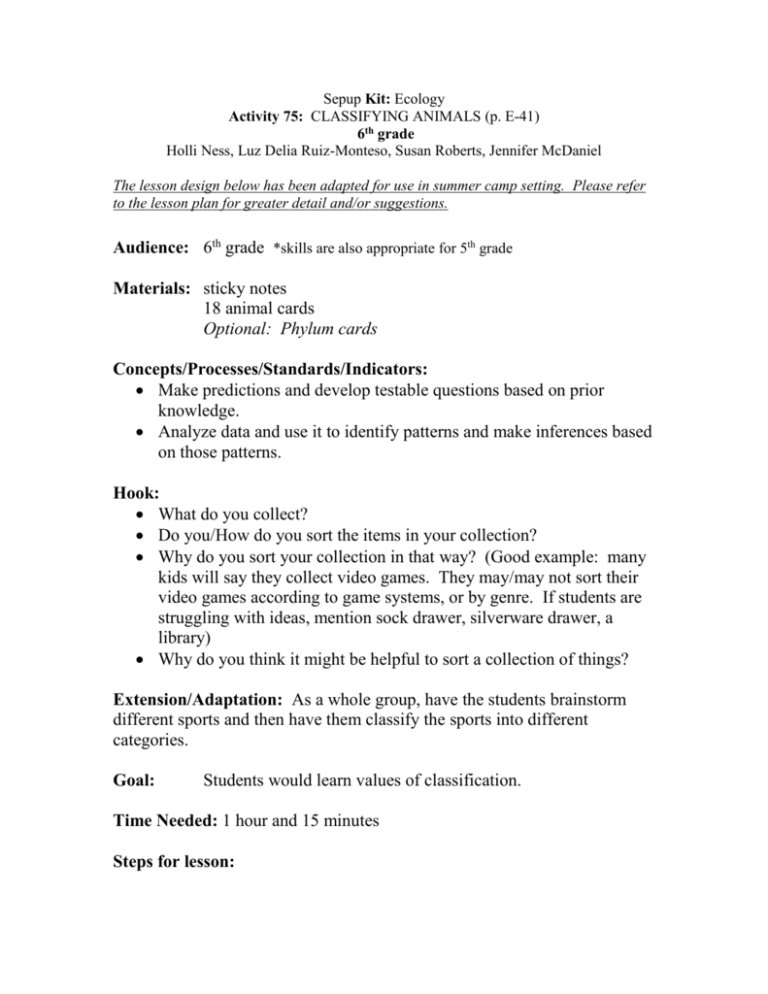
Sepup Kit: Ecology Activity 75: CLASSIFYING ANIMALS (p. E-41) 6th grade Holli Ness, Luz Delia Ruiz-Monteso, Susan Roberts, Jennifer McDaniel The lesson design below has been adapted for use in summer camp setting. Please refer to the lesson plan for greater detail and/or suggestions. Audience: 6th grade *skills are also appropriate for 5th grade Materials: sticky notes 18 animal cards Optional: Phylum cards Concepts/Processes/Standards/Indicators: Make predictions and develop testable questions based on prior knowledge. Analyze data and use it to identify patterns and make inferences based on those patterns. Hook: What do you collect? Do you/How do you sort the items in your collection? Why do you sort your collection in that way? (Good example: many kids will say they collect video games. They may/may not sort their video games according to game systems, or by genre. If students are struggling with ideas, mention sock drawer, silverware drawer, a library) Why do you think it might be helpful to sort a collection of things? Extension/Adaptation: As a whole group, have the students brainstorm different sports and then have them classify the sports into different categories. Goal: Students would learn values of classification. Time Needed: 1 hour and 15 minutes Steps for lesson: 1) Hand out 18 animal cards to each group. 2) Ask them to sort the cards and give them their own heading using the sticky notes. Encourage students to read the data on each card to assist in sorting. 3) Gallery walk – students walk around and observe other groups’ sortings. Write reflections in journal. Whole group discussion: a. How did you go about choosing your groups? b. What things did you look for when you were grouping? c. What are some of the ways that your groups were organized the same or differently than others? d. Pick one animal. Ask: If we all wanted to talk about this animal and didn’t know its name, how could we discuss it with all the members of this group? How would we know we’re talking about the same animal? What are some ways to make it easier for all of us to understand? 4) Have students record their thoughts on this discussion in their notebook. 5) Optional: Introduce Phylum cards which include scientific terms for classification. Have students regroup the animal cards using the Phylum classifications.


